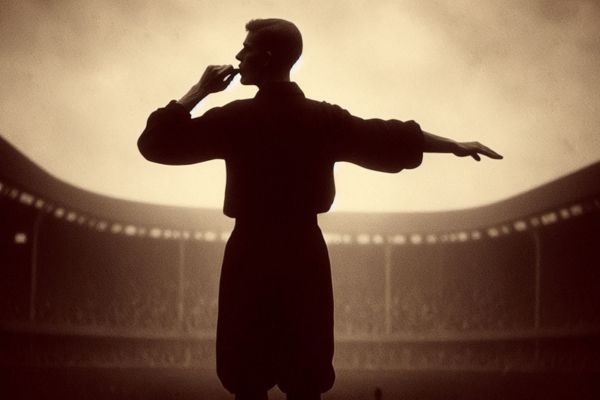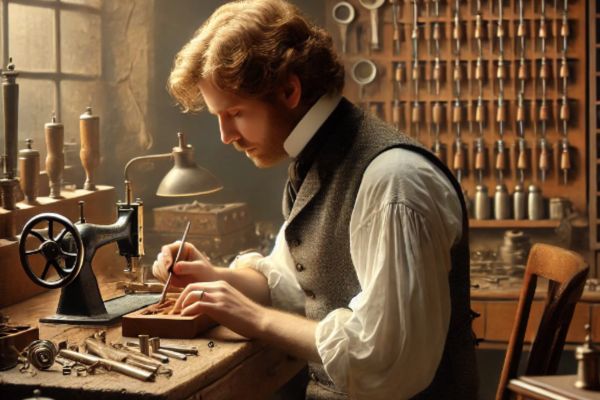Picture the scene: 1870s England.
A football match is underway on a muddy pitch in Lancashire. The sky is grey, the ground soft, and players are booting around a heavy leather ball. Two opponents chase a loose ball near goal. One races ahead, eyes fixed on the prize — the ball and an open goalmouth. But then — clump — a defender makes a desperate sliding challenge, taking the attacker's legs from beneath him. Both players crash into the mud.
As they stagger to their feet, gasping and drenched, a shout pierces the moment:
“Foul!”
They turn to see a man in a dark blazer and trousers, wearing a deerstalker hat, striding toward them. He's waving a white handkerchief.
“Foul!” he repeats.
These were the final days of the referee’s handkerchief — a primitive but practical tool for signalling fouls before the invention of the whistle. But not long after this muddy clash, referees would be handed a new piece of equipment. Or rather, a tool for the mouth: the whistle.
This is the story of football’s oldest surviving technology.
Football Technology: How a Simple Whistle Changed the Game

Modern football is dominated by tech — from VAR to goal-line sensors and smart balls. Yet one humble piece of kit remains unchanged for almost 150 years: the referee's whistle. It's simple, instant, and iconic — a tool that has shaped the flow of every game since the 19th century.
A Blast from the Past: The Birth of the Whistle
Before whistles, referees shouted or used hand signals, including waving handkerchiefs, to manage the game. As football’s popularity soared, a more effective method was needed. Enter Joseph Hudson, a Birmingham toolmaker.

In 1878, Hudson invented the world’s first sports whistle. His company, Hudson & Co., patented what would become the legendary Acme Thunderer — a small brass whistle with a loud, sharp sound that could cut through crowd noise.
The whistle was first used in a competitive football match in 1884, and quickly caught on. Referees across the country adopted it, and within a few years, it became essential to officiating.
An Icon of Football Culture

More than just a tool, the whistle became a symbol of authority. From kick-off to the final whistle, it marks every key moment in a match. While designs have evolved slightly, the original Acme Thunderer is still widely used to this day.
Even with the rise of digital tech in football, the whistle remains irreplaceable — quick, clear, and completely human-powered.
Tech vs Tradition: Could the Whistle Evolve?

In today’s era of precision tech, is there room for a smarter whistle?
Consider a 2024/25 Premier League clash between Crystal Palace and Brentford. Eberechi Eze scored a stunning free-kick — but it was disallowed because referee Sam Barrott had already blown his whistle for an earlier foul. Since the ball was technically "dead," VAR couldn’t intervene. The whistle had frozen the play.
Moments like this raise questions:
Could a smart whistle — one that records data or syncs with VAR — improve decision-making?
Could it delay "dead ball" status to give more flexibility?
The whistle might be old-school, but its role is still shaping football’s biggest debates.
Visit the Home of the Whistle
For fans of football history, the Acme Whistle Factory in Birmingham is a must-visit. You can explore how the whistle is made and see the very same factory that created this historic piece of kit still in action today.
➡️ Visit the Acme Whistle Factory Tour Website to plan your visit.
The Final Whistle
The referee’s whistle is the oldest technology in football still used today — a tool born in the Victorian era and still heard in every match across the globe. It may be low-tech, but it commands authority and sets the rhythm of the beautiful game.
And football continues to evolve. In recent years, referees have been handed another piece of kit: vanishing spray, used to mark out free kicks.
Want to know how that changed the game too?
➡️ Check out our article: How Referee Vanishing Spray Changed Football
